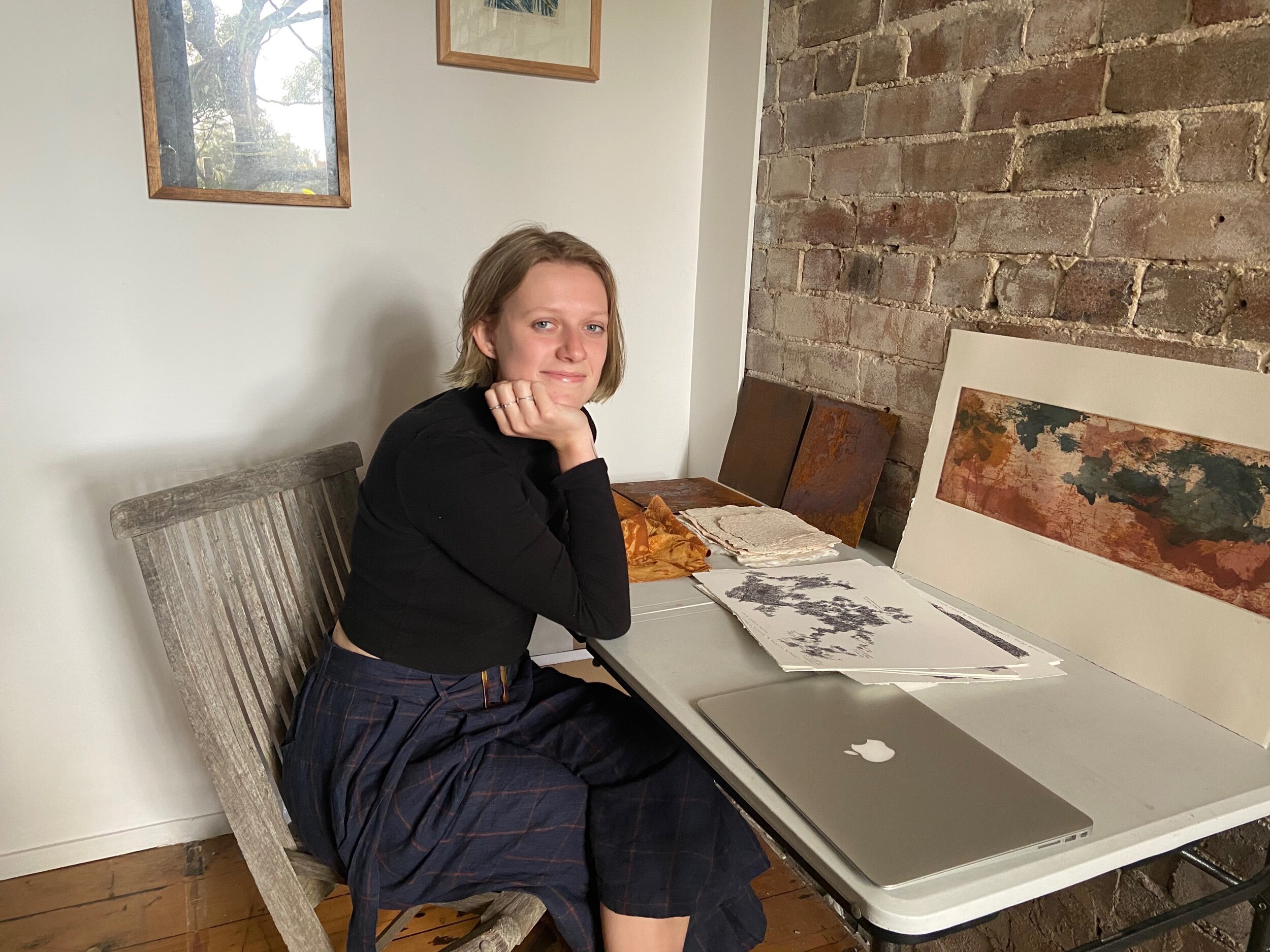Image courtesy of the artist.
Harriett Clark
Harriett Clark is an emerging Sydney based Artist. Currently completing her Honours within Fine Arts at UNSW Art and Design, she has a multi-disciplinary practice, with a focus on intaglio printmaking. Harriett’s practice explores the presence of self and observation of the other within the surrounding environments of the everyday.
Tell us about your creative process, what drives your practice?
Ultimately what drives my practice is an appreciation for the environments which I'm surrounded by daily and the little overlooked components which make up that space. My process is situated in documenting and recording a meditative and contemplative state whilst immersed fully within an environment.
Etching and intaglio processes are often regarded as being grounded in representational imagery, but your practice seems to move beyond this stereotype. How does abstraction function in your work?
The component which made me fall in love with etching/printmaking to begin with was the process which is undergone on a plate itself. The scientific like studio of immersing metals in acids, melting resins, and all steps and techniques in-between which enable the final outcome. This became a starting point for my practice in allowing the processes of etching to take control of the work. The element of surprise and uncertainty which comes from the first reveal of printing an etching plate, to see how the acids have responded to the marks which you have made. This ultimately led to abstraction, as my focus was on an automatic mark-making and gestural action transcribed in print. The etchings of Elisabeth Cummings, Mike Parr and Douglas Schofield all proved to me that abstraction is possible through etching, and so why not attempt it myself!
What has been your experience of Honours study during COVID 19 and isolation? What has the dynamic been like, juggling a practical degree like Fine Arts with restrictions and limited studio access?
It’s been very hard. Due to the current conditions with the pandemic and the lack of access to studios going into the 2nd/3 term, I have actually taken program leave recently as I felt I could not receive the full experience which I was hoping for, in wanting to push my printmaking practice. Aside from this though, the term which I was studying online, although frustrating, became very beneficial for my practice and my thesis research. The work which was featured in the Print In Isolation exhibition is an example of the work which I was developing in this time. Stripping my practice back to the basics of observation. Within the confined space of my home, the observation of the overlooked in the everyday. The hard but important thing to maintain during this time was making. We found as a cohort, the struggle for motivation and our own mental health has been challenged to the extremes within this time. I’m very proud and eager to see the works of my cohort who have continued on with developing their honours projects within this time.
Are there any female printmakers | artists that influence you?
Growing up I had the privilege of knowing two local artists, Maggie Stein and Kate Riley, who’s practices both explore printmaking to some extent. This greatly influenced my knowledge of printmaking from a very early age as well as just the fact of knowing practicing artists. Through my studies and the experience of working with Cicada Press, Elisabeth Cummings has been the artist/printmaker who's works, practice, and character have influenced my practice the most. The ways in which she interprets and responds to her surrounding landscapes, through the abstract mark-making and line work which she sustains from her paintings to her prints also. The print collective 5 Press are also another group of female artists based in Melbourne who investigate the artist book form, through traditional printmaking and book binding techniques. Their works combine a playful and abstract exploration of the medium of printmaking itself, much like I aim to do in my own practice.
Finally, what exciting projects are you working on at the moment?
As my studies are on hold at the moment due to COVID 19, and my studio not having opened up yet, I have the time to experiment! I’ve been doing a bunch of experiments with rust as a ‘natural etching’ process, and a dyeing of fabric from that rust as almost a relief. Follow up on my Instagram to see where that leads as I’m not entirely sure where this will lead. And in September I am in a group exhibition at Scratch Art Space in Marrickville, so fingers crossed that goes ahead in light of todays reality.

